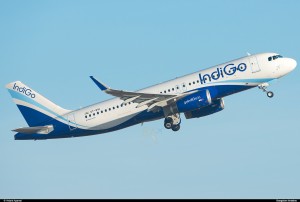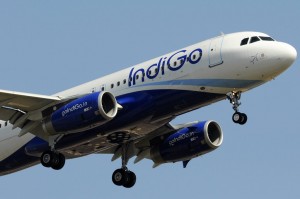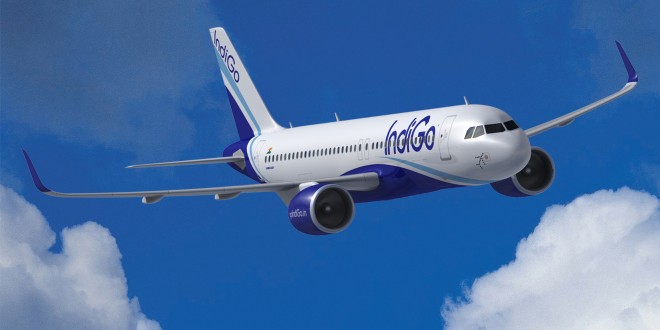100 in 2005; 180 in 2011; 250 with options for another 100, in 2014. That about sums up Indigo’s A320 Family orders on European airframer Airbus.
The latest order of 250 A320neo’s or the (New Engine Option) has the industry abuzz. It is the largest single aircraft order by volume. IndiGo’s orders on Airbus stand at a whopping 530 aircraft. In comparison the entire fleet of commercial aircraft in India is a little over 400 airplanes.
The natural question making the rounds is: does IndiGo need all these aircraft? and what will India’s largest domestic carrier do with all these airplanes?
IndiGo’s brilliant fleet strategy
The latest order does not imply IndiGo will operate 500+ aircraft. Independent estimates conclude that IndiGo’s core operating fleet will be around 200 aircraft (a range of 180~210). The latest order seems to reflect a well crafted, deliberate and brilliant expansion strategy where the airline maintains a very young fleet (average age around three years) and retires airplanes before six years which helps avoid the costly ‘D checks’, which are extremely expensive and takes the aircraft out of service for up to 60 days. This strategy lowers maintenance costs for the carrier, improves fleet availability, and delivers a better passenger experience. Add to all these, profits from the sale and leaseback business model, excellence in execution and you become the envy of the Indian airline industry.
Fuel efficiency

Commercial benefits
From a business perspective, a large airplane order brings with it the ability to negotiate favourable commercial terms. While neither IndiGo nor Airbus confirmed numbers, it is estimated that IndiGo will have negotiated an additional five to seven million dollar discount over normal discounts per aircraft which is list priced at just a little over $100 million. A large order has the added benefit of tying up the limited delivery slots which puts competitors further back in the queue. Media reports indicate, national carrier Air India is now considering the A320neo and the Boeing 737MAX. So while IndiGo will commence its A320neo deliveries next year, Air India will have to wait till 2020 before it can get either of the new fuel efficient aircraft. Further more, in the aviation industry, delivery slots are frequently sold; often at a premium, providing Indigo with yet another revenue stream.
Fleet supply chain – augmentation and replacement
From the initial order of 100 A320ceo in 2005, Indigo has received 99 till date. 83 are in the fleet and 16 have been returned keeping with the strategy of returning aircraft within six years. In the second order of 180 aircraft, reliable sources at the airline indicate IndiGo has opted for 20 A321s, the stretched version of the A320. The 2011 order which originally included 30 A320ceo’s will be used to continue augmenting and also replacing the current fleet. We estimate about 100 of the 180 aircraft will be used for replacements and 80 for fleet expansion. Coming back to the 20 A321s, it is not known whether IndiGo has opted for the A321ceo or A321neo, though we believe it will be the latter. The improved range of the A321neo can enable IndiGo to offer an improved premium class product on longer regional routes like Singapore. A good example is the new JetBlue Mint ‘first class’ product offered by US value carrier JetBlue in its trans-continental flights between New York’s JFK and Los Angeles / San Francisco. For the latest order where deliveries are due to start in 2018, IndiGo’s President Aditya Ghosh indicated in a quote to Reuters “Some of these (new planes) will go to replacement. It’s difficult to say how many at the moment, but a lot will be for growth.”. If IndiGo continues its strategy of returning aircraft within six years, then we expect the new order to be divided 50-50 between augmentation and replacement.
Fleet utilisation

Any way you look at it, with this new order, Indigo has displayed a sense of confidence in the Indian market and signalled that it is looking at the long term. Not to be overlooked is the fact that operations have been consistent and at an operating level Indigo is profitable – which is no small feat in Indian aviation. For the time being, the flight path for Indigo looks onwards and upwards.
To sum up, borrowing a quote from Alexander Pope with a humble attempt to adapt it to aviation: “For size of airplane orders, let strategists contest. Whatever is best managed for profits and return on capital; is best.”
As usual, comments and feedback are solicited and always welcome.
With additional inputs from Devesh Agarwal
 Bangalore Aviation News, Reviews, Analysis and opinions of Indian Aviation
Bangalore Aviation News, Reviews, Analysis and opinions of Indian Aviation





Excellent article.